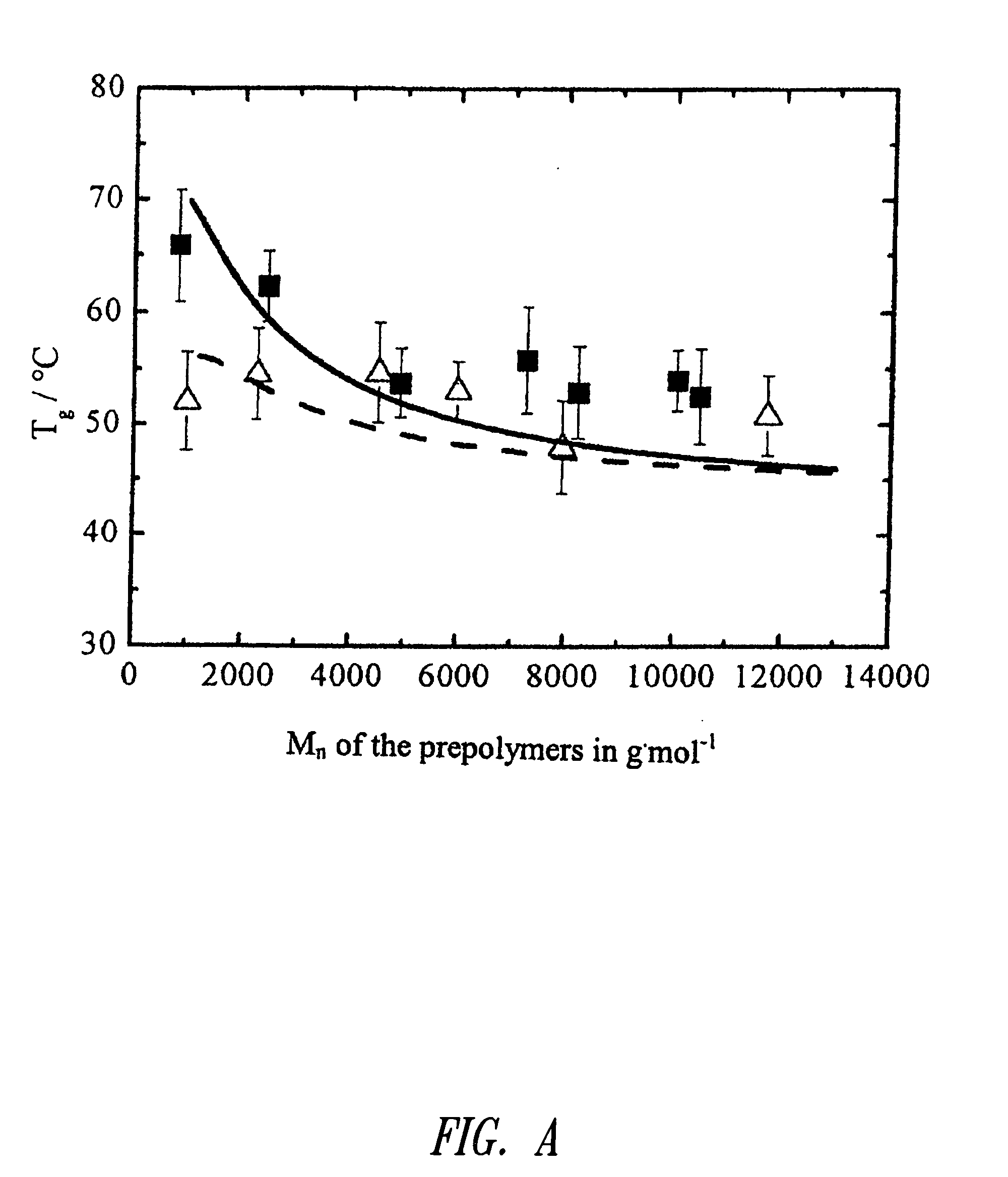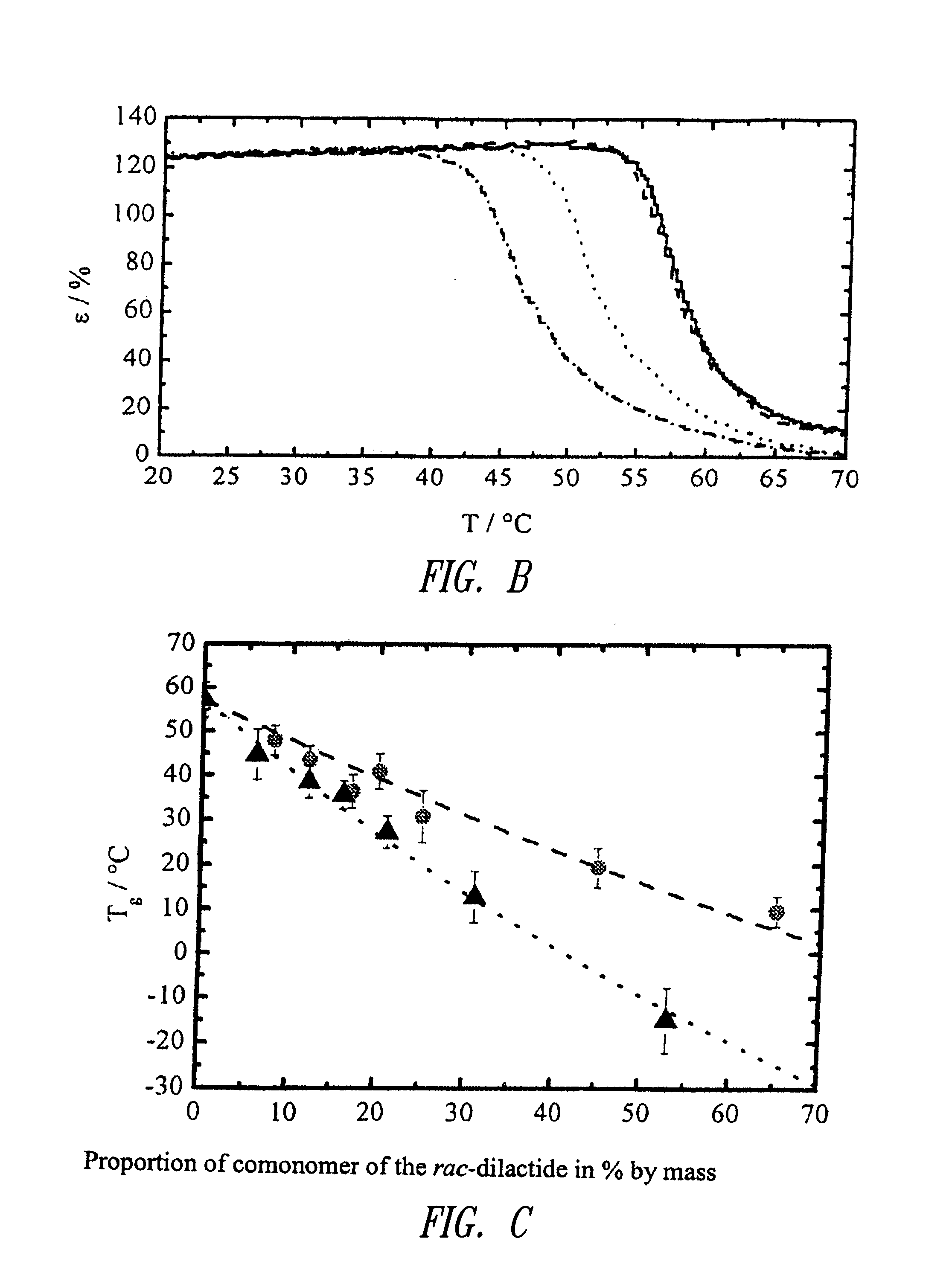Amorphous Polyester Urethane Networks Having Shape Memory Properties
a technology memory properties, applied in the field of amorphous polyester urethane networks having shape memory properties, can solve the problems of affecting the use of materials of this type in some applications, affecting and variability in physical properties, so as to overcome the disadvantages of the state of the art
- Summary
- Abstract
- Description
- Claims
- Application Information
AI Technical Summary
Benefits of technology
Problems solved by technology
Method used
Image
Examples
examples
[0041]The following examples illustrate the invention under consideration.
[0042]Abbreviated designations of the oligomers and the polymer networks
Cooligomers of the rac-dilactide
[0043]X Initiator of the ring-opening polymerization
[0044]E Ethylene glycol
[0045]P Pentaerythrite
[0046]T 1,1,1-Tris(hydroxymethyl)ethane[0047]L rac-lactate[0048]Y Comonomer units
[0049]C ε-hydroxycaproate
[0050]D β-hydroxyethoxy acetate
[0051]G Glycolate[0052]μY Proportion by mass of the comonomer Y according to 1H-NMR relative to the total mass of the repeating units without initiator segment in % by mass[0053]Z According to the initial weight of the reactands, expected number-average molar mass of the oligomers in g·mol−1 rounded to 1,000 g·mol−1
Oligo(propylene glycol)
F-PPG-Z[0054]F Terminal groups
[0055]D Diol
[0056]M Dimethacrylate
[0057]T Triol[0058]PPG Oligo(propylene glycol)[0059]Z Number-average molar mass of the hydroxyfunctional oligomers according to manufacturer's information, in g·mol−1; exception: M...
PUM
| Property | Measurement | Unit |
|---|---|---|
| Molar mass | aaaaa | aaaaa |
| Molecular weight | aaaaa | aaaaa |
| Shape memory effect | aaaaa | aaaaa |
Abstract
Description
Claims
Application Information
 Login to View More
Login to View More - R&D
- Intellectual Property
- Life Sciences
- Materials
- Tech Scout
- Unparalleled Data Quality
- Higher Quality Content
- 60% Fewer Hallucinations
Browse by: Latest US Patents, China's latest patents, Technical Efficacy Thesaurus, Application Domain, Technology Topic, Popular Technical Reports.
© 2025 PatSnap. All rights reserved.Legal|Privacy policy|Modern Slavery Act Transparency Statement|Sitemap|About US| Contact US: help@patsnap.com



